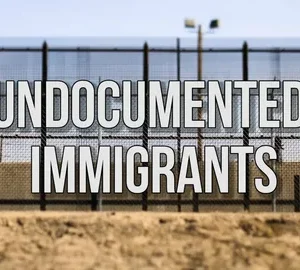Introduction
If you’ve ever tried applying to a foreign university, you probably know that a transcript is like the golden ticket to your academic journey. Without it, admissions offices simply can’t verify your educational history. In 2025, the process of applying for transcripts has become faster and more digital-friendly — but that doesn’t mean it’s always straightforward.
Whether you’re planning to study in Canada, the USA, the UK, or Australia, understanding how to request your transcripts correctly can save you weeks of delays. In this guide, we’ll walk you through everything: from knowing exactly what a transcript is, to how you can request one from thousands of miles away, to ensuring your documents meet the international evaluation standards.
Understanding a School Transcript
What is a Transcript?
A school transcript is an official record of your academic performance. It lists your courses, grades, credits earned, and sometimes your GPA. Think of it as the resume of your education.
It’s issued by your school, college, or university — and in most cases, sent directly to the institution or agency requesting it. You can learn more about official transcript definitions from U.S. Department of Education.
Difference Between an Official and an Unofficial Transcript
-
Official Transcript: Printed on secure paper, sealed in an envelope, or sent electronically through certified services like Parchment or National Student Clearinghouse.
-
Unofficial Transcript: Often a digital PDF or printed copy you can download from your student portal — useful for personal records but not valid for admissions.
Why Transcripts Matter for International Students
Universities use transcripts to evaluate if your previous academic qualifications match their entry requirements. Without an official transcript, most international applications won’t even be reviewed.
Types of Transcripts
High School Transcripts
Needed when applying for undergraduate programs abroad. Includes grades from grades 9–12 (or equivalent).
Undergraduate Transcripts
Required for postgraduate (Master’s) admissions. Lists all courses, grades, and credits from your bachelor’s degree.
Graduate Transcripts
Needed when applying for doctoral programs or further studies. Lists courses, thesis titles, and grades from your Master’s degree.

Common Requirements for Transcript Requests
Before you request your transcript, you’ll need to gather:
-
Student Identification Number
-
Proof of Identity (passport or national ID)
-
Authorization Form (especially if a third party is requesting on your behalf)
-
Processing Fee (varies by institution)
Steps to Apply for a Transcript in 2025
Step 1 – Contact Your Institution’s Registrar’s Office
The registrar’s office is the heart of academic record-keeping. Visit your institution’s website or email them to ask about transcript procedures. Example: University of Toronto’s Transcript Services.
Step 2 – Verify the Transcript Request Policy
Some schools accept online requests, others require physical forms. Always confirm how they process requests in 2025.
Step 3 – Complete the Official Request Form
Download the form from your school’s website or request it by email. Fill it in accurately — any small error can delay processing.
Step 4 – Pay Applicable Fees
Transcript fees range from $5 to $20 per copy. Some institutions charge extra for expedited processing.
Step 5 – Select Delivery Method
You can choose between:
-
Standard postal delivery
-
Courier service (like DHL or FedEx)
-
eTranscript through certified digital channels like Parchment
Step 6 – Confirm and Track Your Application
Ask for a tracking number or digital confirmation receipt.
Online Transcript Applications
Benefits of Online Requests
In 2025, online transcript requests are faster, trackable, and often cheaper. Many institutions now partner with secure digital platforms like National Student Clearinghouse for faster delivery.
How to Use eTranscript Services
-
Create an account on the platform your school uses.
-
Verify your identity.
-
Select the recipient institution and pay online.
Security and Privacy Considerations
Only use official school-approved platforms to avoid scams. Digital transcripts are usually encrypted and password-protected.
Applying for Transcripts While Abroad
Email and Postal Requests
If you’re overseas, email your registrar with scanned ID and request forms, then pay online.
Using Authorized Third-Party Services
You can appoint a trusted person to collect and send transcripts — but you must sign an authorization letter.
Time Zone and Communication Challenges
Always account for time differences and processing delays when abroad.
Transcript Evaluation for International Admissions
What is a Transcript Evaluation?
It’s the process of converting your academic records into a format understood by foreign institutions.
Popular Evaluation Agencies
How Evaluation Impacts Admissions
An evaluation ensures your transcript meets the host country’s academic standards.
Translation of Transcripts
When and Why Translation is Needed
If your transcript is in a non-English language, most foreign universities will require a certified translation.
Certified Translation Services
Use agencies listed by American Translators Association.
Cost and Processing Time
Expect costs of $30–$50 per page and up to 7 business days for processing.
Common Mistakes to Avoid in Transcript Requests
-
Sending unofficial transcripts when official copies are required.
-
Forgetting to include your student ID number.
-
Waiting until the last minute to request.
Cost of Obtaining Transcripts in 2025
Average costs:
-
Local requests: $5–$15
-
International courier: $30–$60
-
Digital delivery: $10–$20
Tip: Request multiple copies at once to save on courier fees.
Delivery Methods and Timelines
Standard Mail
2–4 weeks for international delivery.
Courier Services
3–7 business days.
Digital eTranscripts
Instant or within 24 hours.
Read Also: https://transcript.nou.edu.ng
Conclusion
Your transcript is more than just a piece of paper — it’s the proof of your academic journey. As an international student in 2025, you have more options than ever before to request and send your transcripts quickly and securely. Plan ahead, double-check requirements, and use official channels to ensure your documents arrive on time.
FAQs
1. How long does it take to get a transcript in 2025?
Most requests take 3–7 business days, but international delivery can take longer.
2. Can I request my transcript after graduation?
Yes — universities keep records for years. Contact the registrar even if you graduated a decade ago.
3. Do I need to send transcripts directly to the university?
In most cases, yes — especially for official applications.
4. Are digital transcripts accepted by universities?
Yes, if they are sent through verified platforms like Parchment.
5. Can someone else collect my transcript on my behalf?
Yes, but you must sign an authorization letter and provide their ID.







